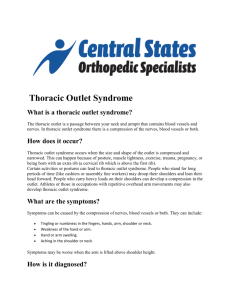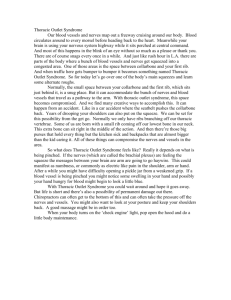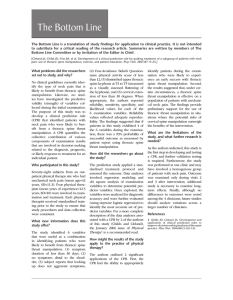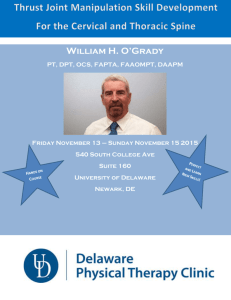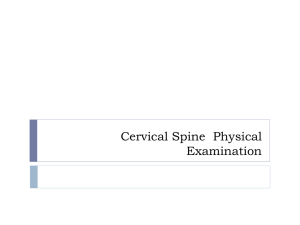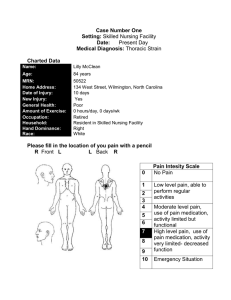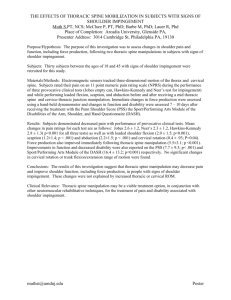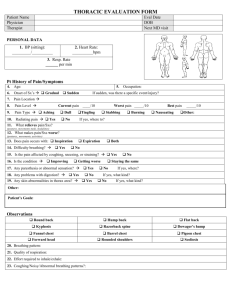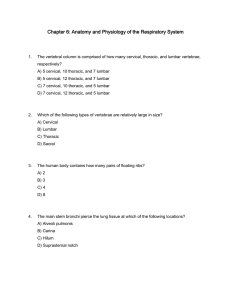Neck January 2013 - York General Practice VTS
advertisement
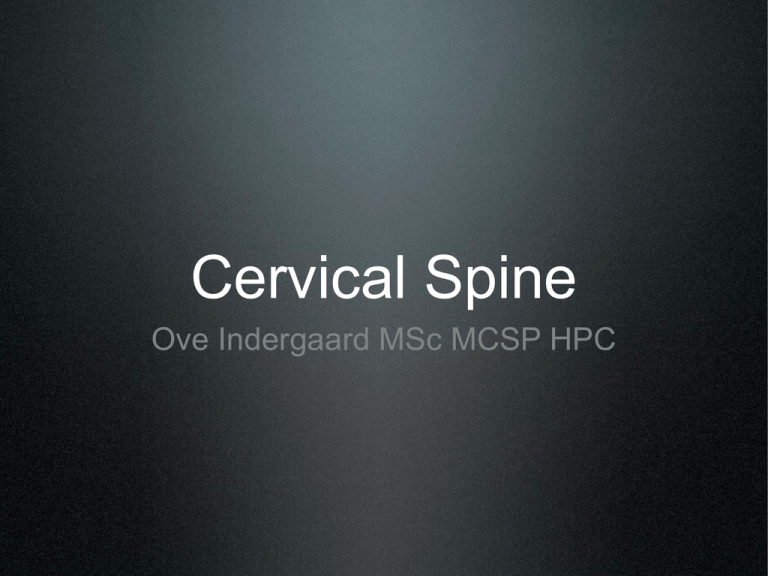
Cervical Spine Ove Indergaard MSc MCSP HPC Anatomy Spinal Movement Anatomy Anatomy Anatomy Objective Examination • Observation: posture, compensatory postures, atrophy/spasm • Movement: Active and Passive, Quality, Range and production of symptoms • Neurological Assessment: Myotomes, Dermatomes, Reflexes, AND tests • Special Tests: Spurlings, Brachial plexus, Thoracic outlet • Neurological assessment: relexes, SLR, PKB, myotomes, dematomes, plantar reflexes Posture Posture Movement Testing • Cervical Spine: • Flexion • Extension • Rotations • Sideflexions • Supine tests • Thoracic Spine • Shoulders Neurological Testing Dermatomes Special Tests • Spurlings test / Foraminal Compression Test Positive Pain in UE toward side laterally flexed postive test 95% sensitive to nerv root pathology Indications Pressure on nerve root Considerations + vertebral artery test Osteoarthritis, osteoporosis, spinal stenosis or cervical spine instability Foraminal Distraction Positive Existing complaints disappear or decrease Indications Nerve root impingement during normal posture Increase in pain may indicate muscle or ligament injury Special Tests • Brachial plexus Positive Radiating pain on side tilting away from = brachial plexus Radiating pain on side tilting towards = nerve root impingement Considerations fracture Special Tests • Thoracic Outlet: Allen’s Test Positive Diminished radial pulse Indications Thoracic Outlet Syndrome Adson’s Test Positive Reduced or altered radial pulse Indications Thoracic Outlet Syndrome Thoracic Outlet Cont Positive Inability to maintain test position Diminished hand function Loss of sensation in UE Indications Thoracic Outlet Syndrome Management of Acute Neck Injuries (whiplash) Whiplash cont Management of Chronic Neck Pain Intervention & Treatment Recommendations evidence based guidelines (JOSPT 2008) Cervical Manipulation/Mobilisations alongside coordination, strengthening, & endurance exercises (Grade: A) Patient Education and Reassurance are important throughout treatment. (Grade: A) The use of upper quarter and nerve mobilisation procedures can be useful in the treatment of patients with neck pain. (Grade: B) These interventions have been shown beneficial and are even more effective when paired with manual therapy and exercise. Use of Thoracic Mobilisation/Manipulation (Grade: A) The use of thrust manipulations and mobilisations have been shown more recently (2012) that it can reduce symptoms in patients with neck and neck related arm pain. Use of Stretching (Grade: C) Stretching involved musculature can be beneficial for patients with neck pain. Activity Limitations (Grade: F) The patient should be limited to functional activity that does not cause an increase in symptoms throughout the treatment period. This helps the clinician to assess changes in the patients level of function during an episode of care. Common exercises • Acute: ROM exercises • Chronic: Dysfunction specific, can be stretches, motor control, stabilisations, general strength
